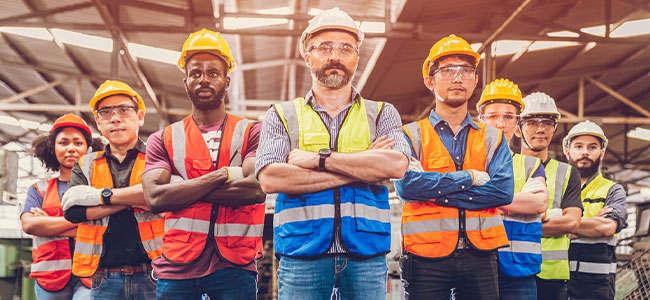
Revolutionizing Safety: A Move Towards Personalized Protection
Moving past benchmarks to real-time individualized insights, technology is paving the way for workplaces that drive individualized safety for each worker.
- By Matthew Hart
- Oct 11, 2023
According to the Department of Commerce, women make up around 30 percent of manufacturing jobs today.1 While that representation is disproportionately low compared to the 47 percent of women in the overall workforce, it’s still a stark increase from the not too distant past when these jobs were overwhelmingly held by men. Optimistically, women’s participation in industrial sectors is also expected to continue increasing as automation makes physically intense job functions more accessible.
But while more women are clocking in today, we must recognize and address the ways the past is still lingering in the veins of the industry and restricting progress.
Occupational safety is an area where outdated data is informing far too many trainings and safety processes being implemented today. I still walk into warehouses and manufacturing facilities only to see benchmarks like “this weight is suitable for 75 percent of males” being used to inform all workers on what is safe to lift. If you’re a woman, or a man who doesn’t fit into the average 75 percent bucket, you’re out of luck.
Data that’s exclusive in nature is also integrated deeper into our industry’s safety fabric. Longstanding training methodologies and best practices are a result of decades of injury data from when these sectors were nearly exclusively male. Gender and sex aside, they also assume factors like height, weight, strength, fatigue, stress level and injury status. Put simply, they recommend the best practice for the most “typical” human, which isn’t very helpful on an individual basis.
When considering the effects of this at scale, the need to address the issue becomes even more apparent. Compared to men, women are more likely to develop at least one musculoskeletal disorder while performing job-related duties. As improving retention and reducing injuries remains so key to productivity and efficiency, we as an industry cannot afford to overlook equal safety attention for every worker.
An Industry Shift Towards Customized Safety
The workforce safety sector has seen significant innovation in the past decade, finding new applications for AI and advanced sensor technology to solve the greatest safety challenge: offering more personalized insights to individual workers and moving away from the “typical” human approach. We continue to see that every body has its unique tendencies, strengths and vulnerabilities and that nothing reduces injury rates as effectively as diagnosing and addressing risk on an individual basis.
This article originally appeared in the October 2023 issue of Occupational Health & Safety.